Eel porridge
White rice, shallots, turmeric and slender, firm-fleshed freshwater eels, after being skillfully prepared by chefs, will become a hot eel porridge dish.
The porridge is cooked quite elaborately, with its own secret. Specifically, the eel bones will be crushed or pounded, then the water will be squeezed and put into the porridge pot to cook thoroughly. Thanks to the water cooked from the eel's backbone, Nghe An eel porridge has a very unique sweet and fragrant taste, without the fatty taste of fat, completely different from the sweetness of porridge stewed from chicken, duck, pork or beef bones.
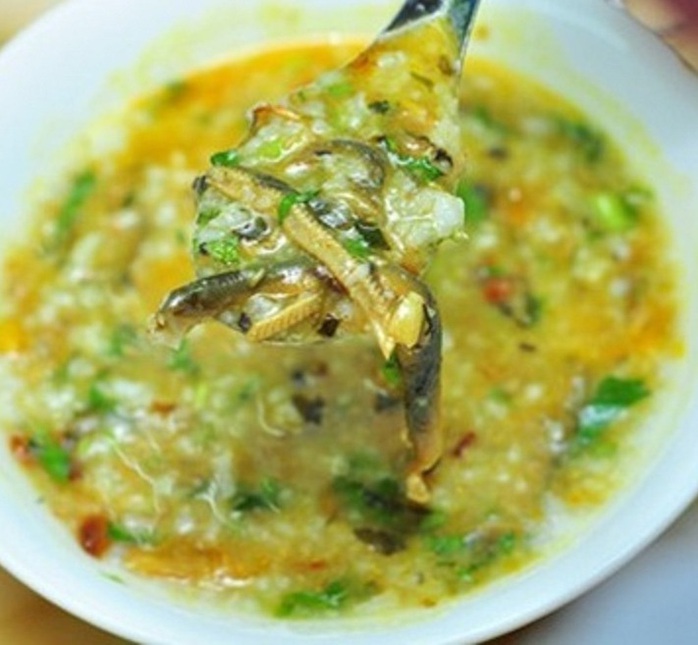
Eel porridge, a specialty of Nghe An
Eel porridge is a simple and familiar dish. From the bustling city of Vinh with famous eel porridge shops in the ancient citadel area to small eateries in any rural area of Nghe An, if you like, you can enjoy hot and delicious eel porridge at any time.
Dien Chau wet rice cake
Banh muot is a rustic dish that has been associated with the people of Nghe An in general and the people of Dien Chau in particular. At first glance, Banh muot looks like Banh cuon of the North, Banh uot of the South, but when you try it, you will find its own unique flavor.
Banh muot is usually as long as an index finger, white and soft, not sticky because it is coated with oil when rolled.

Dien Chau wet cake, a rustic but delicious dish
Banh muot is easy to eat, just eat it with a bowl of fish sauce with lemon juice and sliced fresh chili and it will be delicious. In addition, Banh muot can also be eaten with duck, chicken, beef stew or stir-fried offal, pig's head and cheek (pig's organs such as heart, liver, intestines, kidney, stomach and sausage, blood, pig's head).
Banh muot is no longer a rustic dish but is now available in restaurants, big and small. On Tet holiday, you just need to pick up each piece of cake, dip it in the fish sauce, then slowly put it in your mouth, and sip on some stir-fried intestines for a rich flavor.
Thanh Chuong Chicken Porridge
Thanh Chuong chicken stew is also known as chicken soup. To cook this dish, in addition to delicious hill chicken, salt and shallots are indispensable ingredients. Specifically, the chicken must be bled skillfully, the bleeding hole must be small and precise to keep the chicken's neck skin intact, and all the blood must be removed to keep the chicken meat bright and fresh.
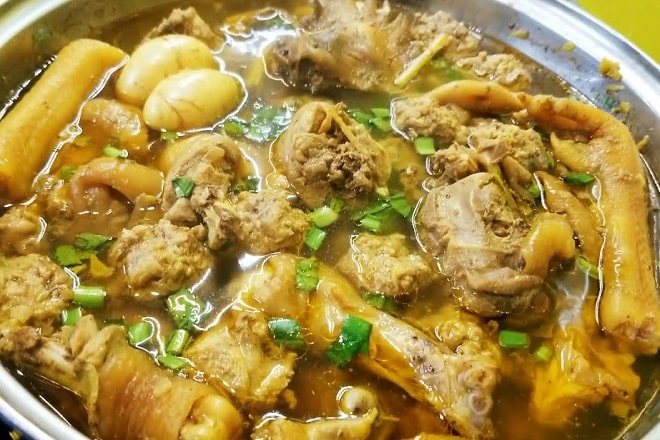
Thanh Chuong Chicken Porridge, a favorite dish of Nghe An people
Chicken neck is taken separately, core is removed, only the skin is kept, chicken blood is poured in and boiled to make neck sausage.
In addition, to make this dish, Thanh Chuong people often filter out the bones and meat. Next, after cutting the chicken, it must be marinated immediately with lemon leaves, white salt, turmeric and crushed fresh chili. While waiting for the meat to be marinated, they will chop the bones to make wood. After the marinade, the pot of cooked chicken soup must be golden brown, with the aroma of lemon leaves, shallots, turmeric and chili. On Tet holiday, if you enjoy chicken soup with rice, you will always remember this rustic dish.
Nam Dan Soy Sauce
According to the artisans, to have a delicious bottle of Nam Dan soy sauce, the first step is to choose the ingredients to cook and incubate. This is a difficult step, determining the quality of the soy sauce. The mold is made from sticky rice with large, round grains. The sticky rice will be kneaded thoroughly, boiled, then spread evenly to cool. When the sticky rice has cooled completely, the maker will pour in a little strong tea and cover it with longan leaves. After being incubated for about a week, it will have a sweet aroma and a straw-yellow color, then it will be crushed, dried in the sun, and then put in a sealed plastic bag to wait for the soy sauce to be fermented.
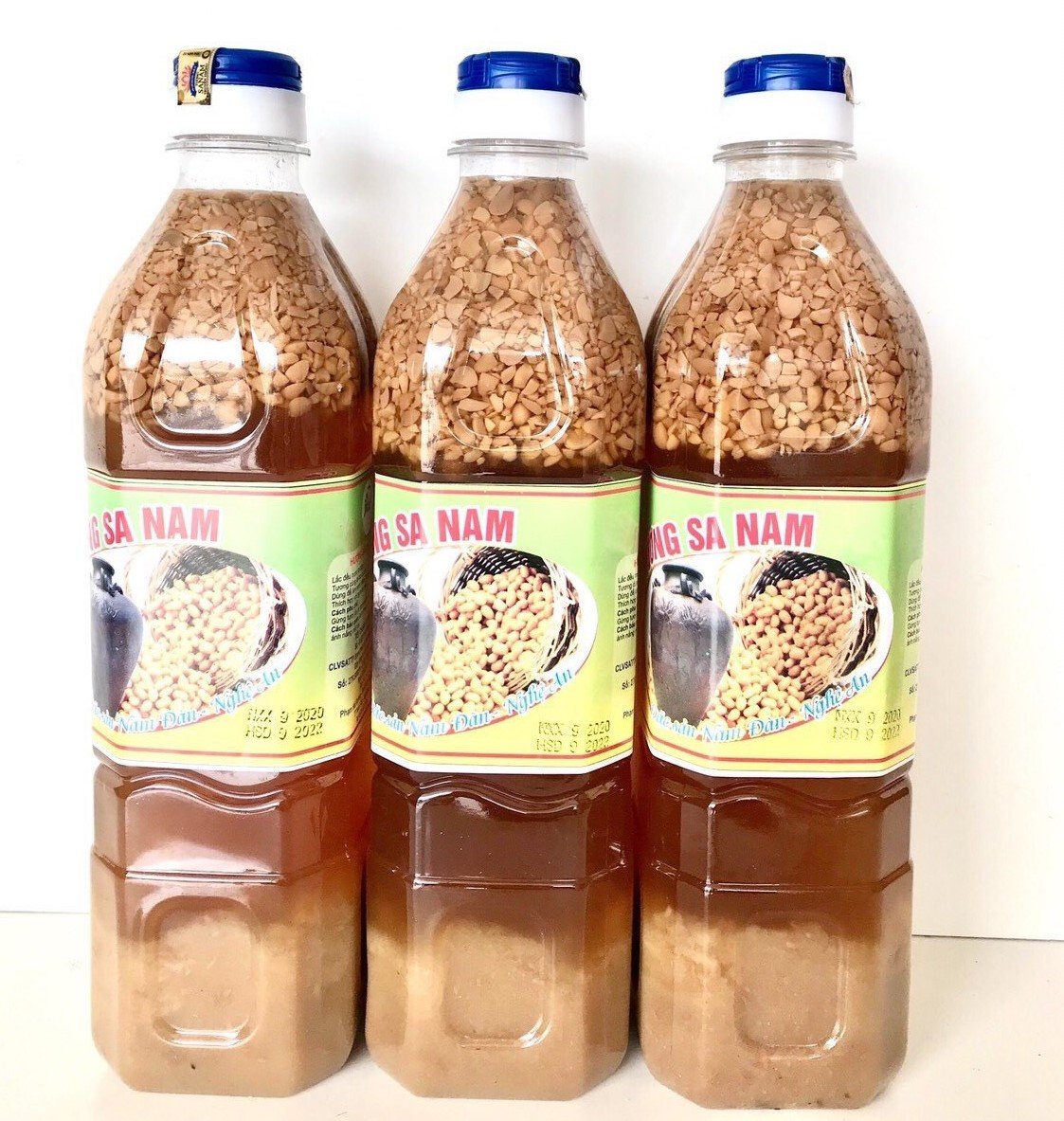
Nam Dan Soy Sauce, a delicious dish of Nghe An people
In parallel with the mold drying process, the soy sauce maker must roast the soybeans, then grind them in half, clean the shells, and put them in a pot to cook for about 15 hours. Then, let them cool and scoop them out into a jar to dry in the sun. Every morning, the soy sauce maker stirs the jar of soy sauce, skimming off the foam and impurities that float to the surface. After about 7 days of incubation, the soy sauce is made by adding mold and white salt to the soy sauce jar at a ratio of 7 kg of mold per 100 liter jar and 17 - 18 kg of salt per 100 liter jar.
After about 45 days of fermentation, we will have a jar of delicious, golden Nam Dan soy sauce. The longer Nam Dan soy sauce is left, the better it tastes. Soy sauce is often used as a dipping sauce for vegetables, meat, rice, braised fish, and is an indispensable dish for Nghe people during Tet.
Source





![[Photo] Da Nang: Hundreds of people join hands to clean up a vital tourist route after storm No. 13](https://vphoto.vietnam.vn/thumb/1200x675/vietnam/resource/IMAGE/2025/11/07/1762491638903_image-3-1353-jpg.webp)




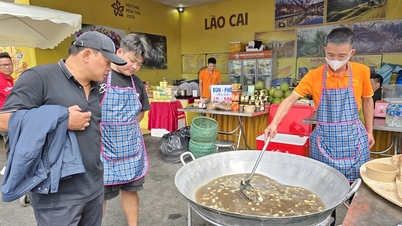

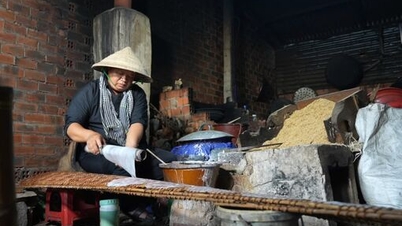




































































































Comment (0)